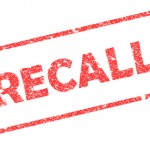In late February, Dr. D wrote a blog on the perils of medical device reprocessing with a focus on “duodenoscopes” a type of endoscope. The FDA had communicated a warning about the reprocessing of duodenoscopes and the fact that multiple patient infections and deaths had occurred due to the improper reprocessing of the scopes. It appears multiple patients were afflicted with a really bad infection (a.k.a., the menacing superbug) post-operatively after undergoing an endoscopic retrograde “cholangiopancreatography” (look-it-up) procedure. In fact, according to an article printed in The Seattle Times, potentially 32 patients were exposed to the superbug and 11 died, at the Virginia Mason Medical Center. Richard Bigler was one of the victims exposed to the superbug, which ultimately resulted in his untimely death at the age of 57. Theresa Bigler (one ticked-off widow) decided that her husband’s death was one too many. She filed a lawsuit to prevent such tragic events from recurring and bringing sorrow to other families, while seeking punitive damages from Virginia Mason and Olympus (America). Now with any litigation, it is typical that the opposing sides will attempt to “bowdlerize” (look-it-up) many of the facts associated with the case. Hopefully, Lady Justice will prevail. But wait, there’s more!
People, here is where this story gets kind of weird from a litigation standpoint. According to an article published by the Los Angeles Times, Virginia Mason has joined Bigler in her lawsuit against Olympus. So if you are keeping score, it is Bigler v. Virginia Mason and Olympus, and Bigler and Virginia Mason v. Olympus (this reads like a WWF wrestling card). According to the Los Angeles Times article, Olympus was aware of potential issues associated with the reprocessing of the Olympus TJF-Q180V scope and had issued safety alerts in the European Union in 2013 and again in 2014. However, Olympus failed to issue any type of warning into the United States until February of 2015 (nice way to endear Olympus with the FDA). This warning was not issued until the Los Angeles Times broke the story on potential superbug infections at the UCLA Medical Center. On March 26, 2015, the FDA acknowledged that Olympus had validated new reprocessing instructions for the Model TJF-Q180V Duodenoscopes; and recommended that healthcare facilities using the Olympus scopes begin adopting the new reprocessing instructions immediately. However, for the families suffering from the loss of loved ones (such as the Biglers), this newly validated reprocessing procedure can only be viewed as a day late and a dollar short. Considering the marvels associated with today’s technology, Dr. D’s question to industry is, “Can a disposable scope be developed at a reasonable cost to healthcare providers?” Considering all of these nasty bugs that can hide in the nooks and crannies of medical devices with complex geometries (resulting in viral and bacterial infections, a.k.a., the superbug), maybe now is the time to truly weigh patient outcomes versus the risks associated with the reprocessing of duodenoscopes.
Takeaways
For this week’s guidance, Dr. D will leave the readers with just one takeaway. Dr. D has never been a big fan of reprocessing, especially the reprocessing of devices clearly marketed as single-use, such as ablation catheters. For simple geometry devices, such as stainless-steel surgical instruments, the risk for subsequent patient infections due to reuse are probably low. However, the healthcare practitioners employing reusable duodenoscopes probably considered the patient risk equally as low, until patients started to become infected and subsequently perished due to a superbug infection. Should the cost benefits associated with the use of a reprocessed duodenoscope ever outweigh the potential risk to the patient health? In closing, thank you again for joining Dr. D, and I hope you find value in the guidance provided. Until the next installment of DG, cheers from Dr. D. and best wishes for continued professional success.
References
Allecia, J. (2015, March). Widow sues Virginia Mason; hospital begins notifying ‘superbug’ victims. Retrieved May 19, 2015, from http://www.seattletimes.com/seattle-news/health/widow-sues-virginia-mason-hospital-begins-notifying-superbug-victims/
Code of Federal Regulation. (2014, April) Title 21 Part 820: Quality system regulation. Washington, D.C.: U.S. Government Printing Office.
Devine, C. (2011). Devine guidance for complying with the FDA’s quality system regulation–21 CFR, Part 820. Charleston, SC: Amazon.
Devine, C. (2013). Devine guidance for managing key attributes of a FDA-compliant quality management system – 21 CFR, Part 820 Compliance. Charleston, SC: Amazon.
Terhune, C. (2015, May). Superbug outbreaks: Seattle hospital accuses Olympus of hiding scope defects. Retrieved may 19, 2015, from http://www.latimes.com/business/la-fi-olympus-scope-seattle-20150512-story.html





